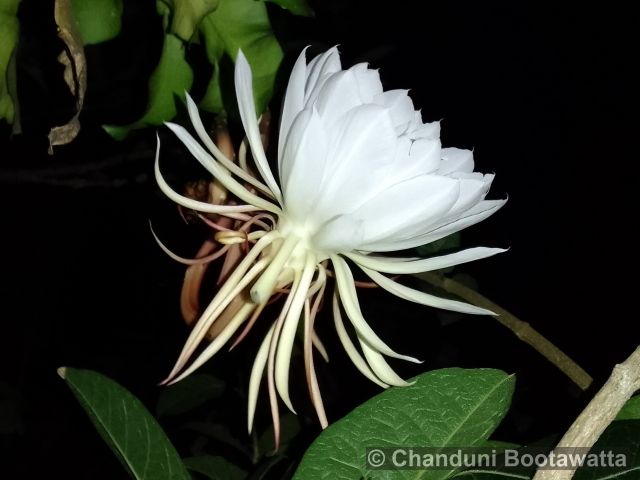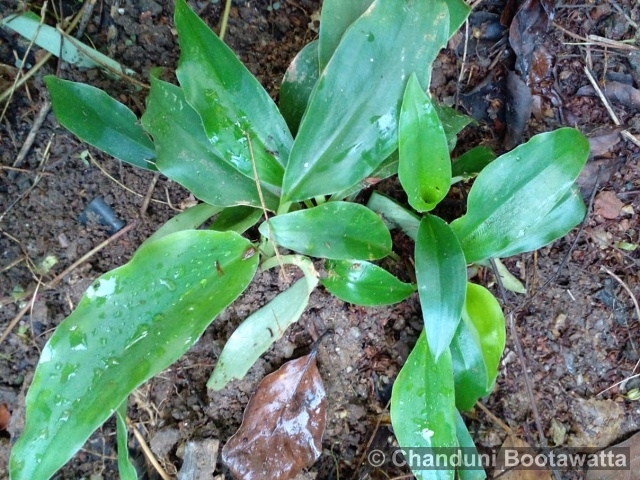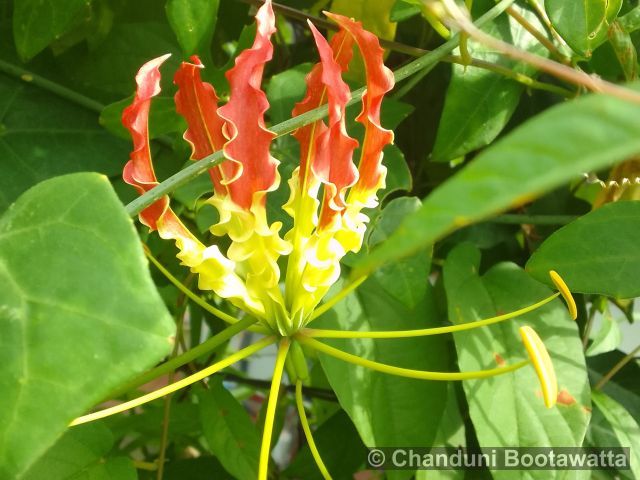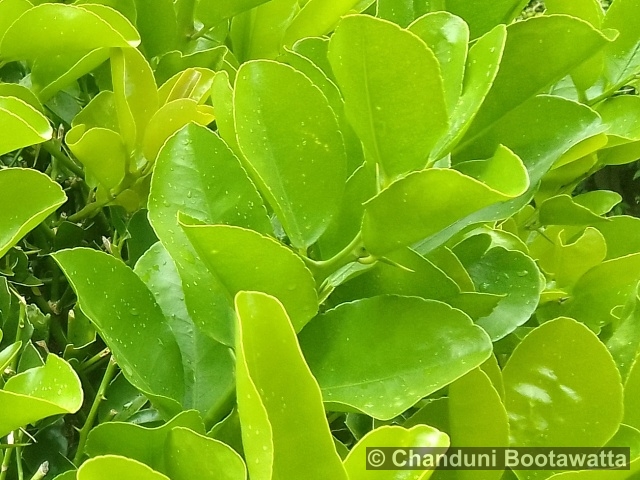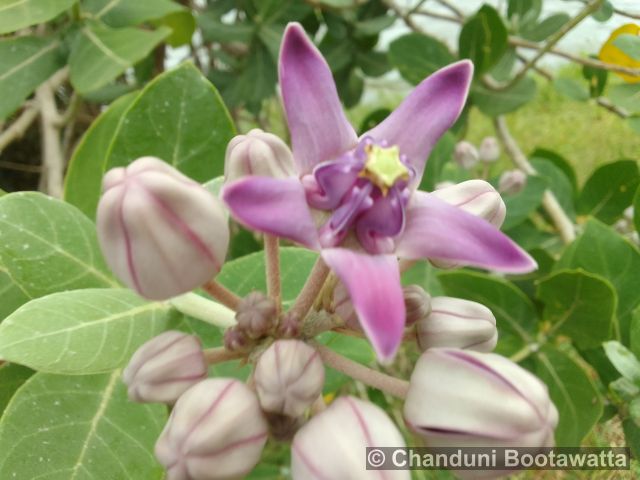Tento příspěvek byl přečten321krát!
YOU CAN FIND THE CZECH VERSION IN THIS LINK
Sea Daffodil, Κρίνος της θάλασσας
Syn.: Pancratium carolinianum L., Hymenocallis caroliniana (L.) Herbert, Hymenocallis georgiana Traub, Hymenocallis palusvirensis Traub ex J.E. Laferriere
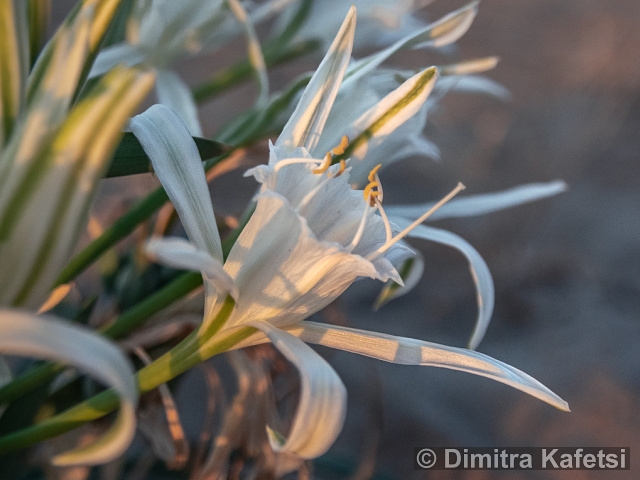
Family: Amaryllidaceae – amarylkovité


Description: Pancratium maritimum, is a Mediterranean perennial geophyte that typically grows in coastal regions, especially along sandy beaches, and dunes. This plant is 30–60 cm high and has long strap-like leaves that emerge from a central bulb that sinks down up to 80 cm into the sand. It is characterized by its big, white and fragrant flowers that are trumpet-shaped and lie on top of tall, sturdy stems. Each plant produces 2–14 flowers during the summer that have a distinctive radial symmetry, with six tepals and a prominent trumpet-shaped corona. Each flower produces 10–20 extremely light black seeds that are specialized for both anemochory and hydrochory. The leaves of the plant usually appear after the blooms (hysteranthous), and it is common for them to die back during hot summers. This plant is mainly pollinated by the hawk-moth Agrius convolvuli with a few studies suggesting that it’s also capable of self-pollination.
Ecology and threats: This plant is well adapted to survive in the harsh habitat of the Mediterranean coasts. This habitats are characterized by the low nutrient and freshwater availability and high temperatures, where it is also frequently exposed to the continuous sea breeze and salt spray. Unfortunately, these types of ecosystems have been severely disturbed due to the ongoing pressure of human activities and many of the plant species that inhabit them are facing serious threats. Some studies suggest that local populations of the plant in parts of its extend are seeing a remarkable population decline during the last decades, with several local extinctions, due to overcollection, sand dune erosion, tourism development etc. However this plant species seems to be quite resilient as has a great dispersion strategy and its seeds have great longevity and germination rate which makes it very capable of rapid colonization of new habitats, or re-colonization as habitats become suitable and therefore it is assessed as least concerned (LC) by the IUCN.
General distribution: P. maritimum, can be found all throughout the Mediterranean basin, spanning Spain, Portugal, France, Italy, Greece, Albania, Montenegro, Morocco, Algeria, Cyprus, Malta, Tunisia, Libya, Turkey, Egypt, Jordan, Israel, and Lebanon. It also extends to northern Portugal and Spain, France, and parts of Great Britain, as well as to the Black Sea region, including Turkey, Bulgaria, Romania, southwestern Russia, Armenia, Georgia, and Azerbaijan.
Use: The complex alkaloids and phenolic acids that are found in plants of the Pancratium genus have attracted significant attention due to their diverse pharmacological properties, including antiviral, antifungal, antimalarial, antioxidant, antitumoral properties, and anti-Alzheimer’s agents. P. maritimum in particular, is one of the most exhaustively investigated species
Author of text: Dimitra Kafetsi.
Authors of photos: Dimitra Kafetsi and Daniel Hrčka.
Photographed in Greece, Rethymno Crete 2/9/2022, Kyparissia, near village Kalo Nero 10/8/2018.
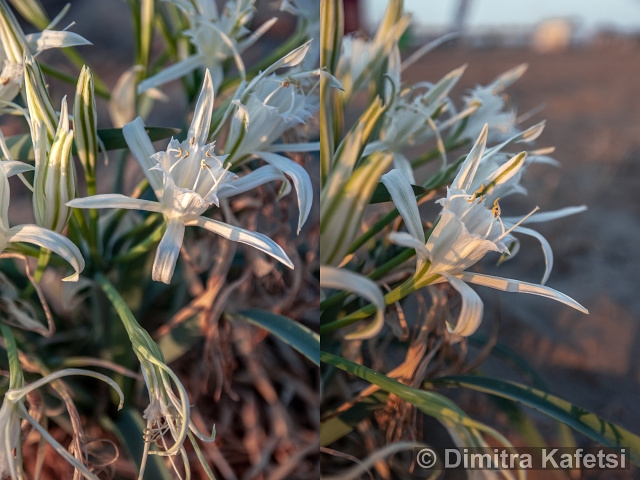
References
De Castro, O., Di Maio, A., Di Febbraro, M., Imparato, G., Innangi, M., Véla, E., & Menale, B. (2016). A Multi-Faceted Approach to Analyse the Effects of Environmental Variables on Geographic Range and Genetic Structure of a Perennial Psammophilous Geophyte: The Case of the Sea Daffodil Pancratium maritimum L. in the Mediterranean Basin. PLoS ONE, 11(10), e0164816. doi:10.1371/journal.pone.0164816.
Rokbeni, N., M’rabet, Y., Cluzet, S., Richard, T., Krisa, S., Boussaid, M., & Boulila, A. (2016). Determination of phenolic composition and antioxidant activities of Pancratium maritimum L. from Tunisia. Industrial Crops and Products, 94, 505-513.
Soltan, M. M., Hamed, A. R., Hetta, M. H., & Hussein, A. A. (2015). Egyptian Pancratium maritimum L. flowers as a source of anti-Alzheimer’s agents. Bulletin of Faculty of Pharmacy, Cairo University, 53(1), 19-22. https://doi.org/10.1016/j.bfopcu.2015.02.002.
Vicedo, J. (2018). Pancratium maritimum. The IUCN Red List of Threatened Species 2018: e.T18990540A57467022.http://dx.doi.org/10.2305/IUCN.UK.20182.RLTS.T18990540A57467022.en.



 Poslat emailem
Poslat emailem
